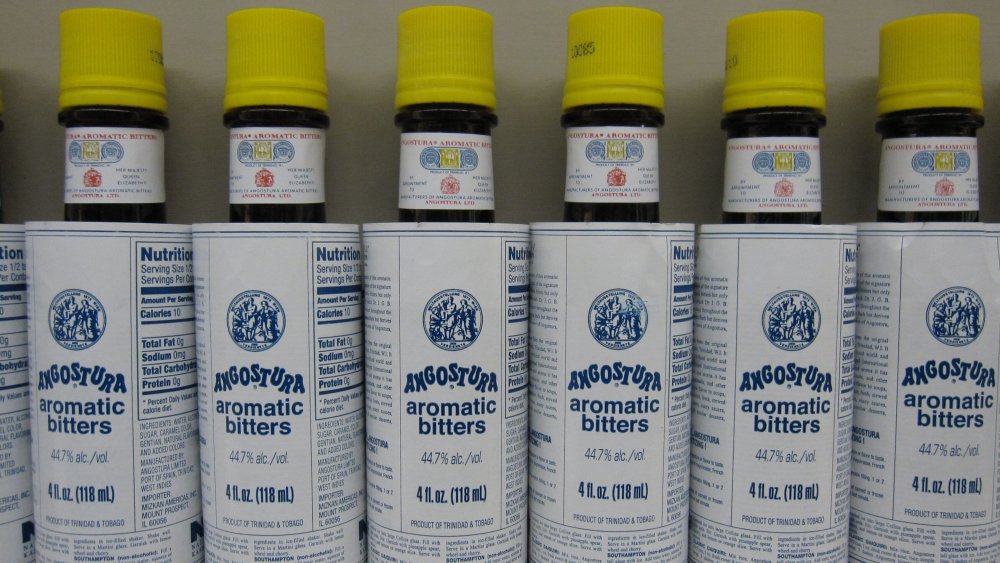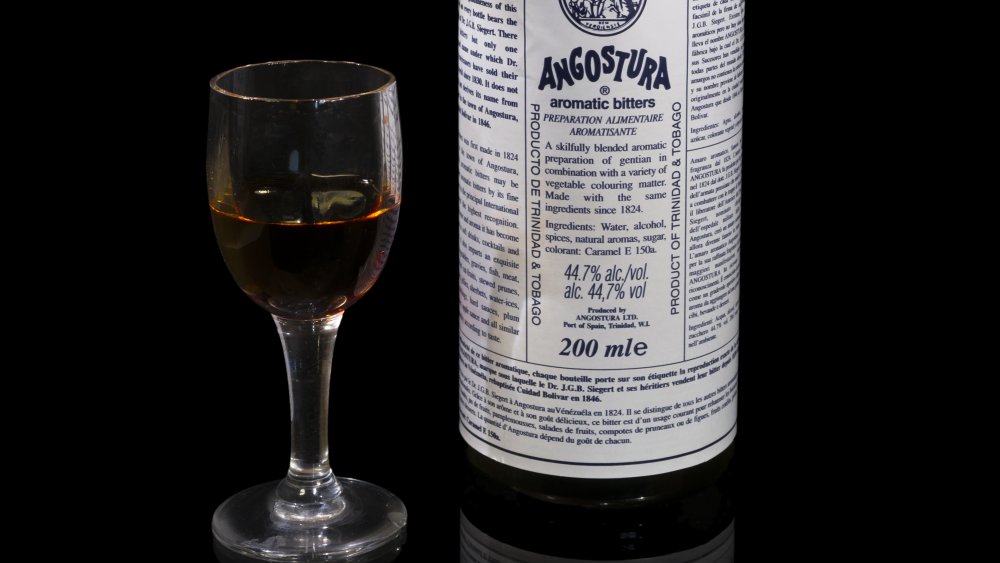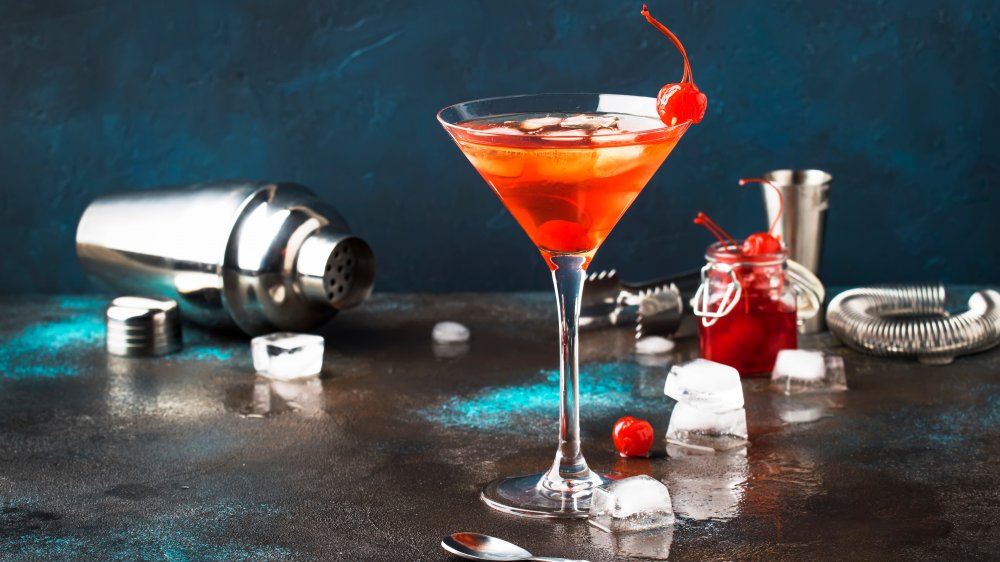The Untold Truth Of Bitters
Bitters are an important part of any liquor cabinet and bartenders likely go through cases of the stuff quite frequently given how tiny the bottles are and how integral they are to dozens of cocktails. Their history spans more than 200 years with a cocktail recipe from 1806 calling for just a few simple ingredients: "a stimulating liquor, composed spirits of any kind, sugar, water, and bitters" (via Smithsonian).
Perhaps the most popular type of bitters is Angostura, which originated in a city in Venezuela that used to share its name (later the city was renamed Cuidad Bolivar). The bitters recipe was kept secret, but it was comprised of a mixture of botanicals. It wouldn't be out of the realm of possibility that the original mixture consisted of bark from a species of trees that botanists also named Angostura.
While the recipe was later changed (but still never made available), typically bitters consist of roots and bark of different plants.
The genesis of Angostura
Angostura bitters were invented by a doctor named Johann Siegert, who was serving as the physician for revolutionary Simon Bolivar's armies. He concocted the stuff as a cure for stomach problems and a stimulant for troops that was meant to help treat the effects of malaria and keep their spirits up (via Angostura Bitters). As time went on, fewer people were using bitters for medicinal purposes and they became common in beverages. Bitters were used to make a low-quality alcohol taste slightly better, and in the 1850s, the doctor began exporting his product to England, the United States, and countries in the Caribbean. In the 1870s, the doctor's sons moved to Trinidad.
As the Golden Era of Cocktails was ushered in, Angostura won the Medal of Excellence in Vienna in 1873 and was awarded a gold medal for product excellence at the World Trade Fair in Philadelphia in 1876. The Manhattan, perhaps the most famous cocktail that calls for bitters, was invented in 1874.
Bitters were adored by the high and mighty, and Siegert's grandson was appointed the sole purveyor of bitters to King Alfonso XIII of Spain in 1907. Five years later, they were also appointed the royal suppliers to King George V of England.
Angostura enters the modern era
Also around the same time, the United States passed the "Pure Food & Drug Act," which required labels to be more straightforward. For example, the word "cure" was no longer to appear on labeling, which sunk many bitters that were still marketing themselves as medicines. But since Angostura had already moved into the cocktail arena, their brand was safe.
Once prohibition ended in 1933, Americans went right back to sucking down cocktails made with bitters, but in plain view of authorities. Drinks like martinis, old fashioneds, and daiquiris that called for bitters were in high demand. People began using bitters in their cooking as well and it was frequently called for to add another layer of flavor to soups and stews.
The company launched its orange bitters product in 2007, which added a citrus taste to the original formula. It was the first new product introduction in close to two centuries.
With craft cocktails as popular as ever these days, it should come as no surprise that Angostura sales are booming. Angostura is the world's best selling bitters and last year the company saw its highest revenue in a decade. Sales increased a whopping 8.1 percent to $847 million in 2019 (via Loop).


